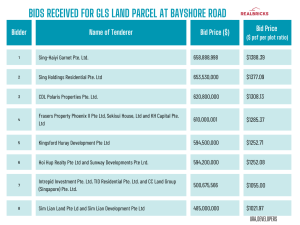
Lighted skyscrapers at Singapore CBD after sunset.
As the Asian property market enters 2025, a significant shift is underway. Major markets such as Hong Kong, Singapore, Australia, and Japan are poised for growth, driven by falling interest rates and favorable economic policies. Bloomberg Intelligence (BI) reports that these trends will bolster home prices across the region, presenting both opportunities and challenges for buyers, investors, and policymakers.
The Growth Trajectory Across Major Markets
Hong Kong: Leading the Way
After years of declining property values, Hong Kong is set to experience a strong rebound. BI analysts, including Ken Foong, predict a 10% rise in home prices, reversing a nearly 30% drop since their peak in 2019. This resurgence is largely attributed to recent interest rate cuts and relaxed mortgage regulations, making homeownership more accessible. These measures aim to restore buyer confidence in one of Asia’s most expensive property markets.
Australia: Regional Variations Drive Growth
Australia’s property market is also on an upward trajectory, with an expected increase of 7% to 8% in residential prices. However, growth is uneven across cities. Perth and Brisbane lead the charge with projected gains of 15% and 10%, respectively, fueled by high demand and limited supply. In contrast, Sydney’s property prices are expected to rise by only 5%, as affordability challenges continue to limit access for average households.
Singapore: Modest but Steady Gains
In Singapore, home prices are projected to grow by 3% in 2025 following a dip in the third quarter of 2024. Key drivers include falling interest rates, strong household balance sheets, and sustained demand from public housing owners upgrading to private apartments. However, factors such as macroeconomic uncertainties, an increase in new property launches, and rising unsold inventory could temper growth.
Japan: Inflationary Pressures Boosting Values
Japan’s housing market is expected to grow by 2%, supported by potential inflationary pressures in major cities like Tokyo and Osaka. As inflation typically drives up asset prices, property values in these urban centers are likely to climb further, making Japan an attractive option for investors seeking long-term appreciation.
What’s Fueling the Rise?
The common thread across these markets is the easing of interest rates and supportive government policies. These factors reduce borrowing costs, encourage investments, and provide much-needed relief to buyers.
In Hong Kong, lower down payment requirements are expected to draw more buyers into the market. Similarly, in Australia, robust growth in cities like Perth and Brisbane reflects strong local demand and a surge of interest from interstate and international investors. Meanwhile, Singapore’s market continues to benefit from its reputation as a safe-haven investment destination, despite some constraints on growth.
Challenges Ahead
While the outlook is optimistic, challenges remain:
Affordability: Despite interest rate cuts, affordability remains a barrier, especially in cities like Sydney and Hong Kong.
Market Saturation: Singapore’s rise in unsold inventory and new launches could dampen price growth.
Economic Uncertainty: Global macroeconomic factors, including inflation and potential geopolitical tensions, may impact buyer sentiment.
Takeaways for Buyers and Investors
- Timing Is Key: With interest rates dropping, now might be an opportune time for buyers to enter the market or upgrade their homes.
- Location Matters: Focus on high-growth areas like Brisbane, Perth, and Tokyo for better returns on investment.
- Be Cautious:
Conclusion: A Year of Opportunities and Challenges
2025 is shaping up to be a dynamic year for the Asian real estate market. Hong Kong’s resurgence, Australia’s regional growth, Singapore’s steady rise, and Japan’s inflation-driven appreciation collectively paint a picture of optimism. However, buyers and investors should remain vigilant, balancing market opportunities with potential risks.
For those keeping an eye on these markets, staying informed will be crucial. As these trends unfold, the property landscape across Asia is set to redefine itself, offering both challenges and rewards in equal measure.



